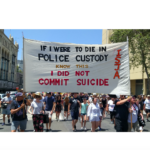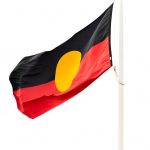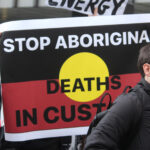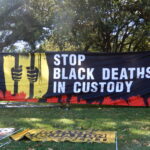Aboriginal Death in Custody Was Preventable, Inquest Hears

The inquest into the death of an Aboriginal woman taken into custody after being refused bail over suspected shoplifting offences has heard that there were multiple opportunities to help her, which went ignored by ‘arrogant’ prison staff.
Yorta Yorta woman Victoria Nelson died alone in a prison cell at Melbourne’s Dame Phyllis Frost Centre on January 2, 2020, after spending several hours prior to her death screaming and in pain.
The official cause of Ms Nelson’s death has been reported as Wilkie’s Syndrome, a rare medical condition that affects the intestine. Ms Nelson was also suffering from heroin withdrawal.
Desperate woman ignored
Despite her pain, in recordings played to the inquest, Ms Nelson was polite and gentle with prison staff, never abusive, using terms such as “Miss” and “Thank You” over intercom calls as she repeatedly asked for help with worsening vomiting, cramps and pain.
The inquest heard that prison officer Tracey Brown, who was on night shift in the prison unit where Veronica died, didn’t check her cell after she became unresponsive on her final intercom call.
The same night nurse Atheana George spent hours watching a movie, apparently unaware Ms Nelson was dying in her cell.
The nurse has previously told the inquest that she did not know why she had not checked Veronica’s patient notes before she went down to give her medication early on the morning she died, and that in the hours prior she had ‘assessed’ Ms Nelson and passed medication through a small flap in the prison door, without actually stepping inside the cell.
The inquest heard that the nurse had to prise Ms Nelson’s cramping hand open to give her medication – despite this, the nurse did not make any notes, or conduct a follow up check on Ms Nelson. Instead she spent hours of her shift watching YouTube.
The inquest is examining the circumstances surrounding Veronica Nelson’s death in custody – and it’s perhaps no surprise that evidence so far shows an apparent level of apathy from the staff to provide proper checks on Ms Nelson in the hours that she was clearly distressed, which could have determined how ill she really was, and may have saved her life.
In one recording played to the inquest, Ms Nelson asked: “When is the doctor coming to see me?”. Officer Brown responded: “It’s not an emergency. Stop asking.”
Officer Brown also said via intercom: “Ms Nelson you need to try and stop screaming because you are keeping other prisoners awake. I can’t give you anything else.”
Increasing distress
As Ms Nelson became increasingly distressed, Officer Brown told her that she had alerted medical staff when in fact she did not speak to the duty nurse until almost an hour later.
When she finally spoke to nurse Atheana George, Officer Brown said Veronica had gone to sleep, when she had no idea whether that was actually the case.
Officer Brown did not check on Ms Nelson during her hourly walks around the prison cells either.
Officer Brown admitted to the inquest that she failed in her duty of care and that she had made decisions about Ms Nelson’s medical care that she was not qualified to make.
The inquest also heard that when Ms Nelson was unresponsive on the intercom, Officer Brown did not walk 30 metres from her office to physically check on her. She ended her shift without a proper handover to her colleagues, who later found Nelson’s body on the floor of her jail cell.
More than 60 witnesses are expected to be called to give testimony to the inquest over the coming weeks.
Broken system
It is examining not only the circumstances surrounding the death of Ms Nelson, but also the adequacy of prison healthcare and the laws relating to bail applications, which allowed Ms Nelson to be locked behind bars, despite not being proven guilty of the shoplifting charges that had been laid against her.
According to statistics from the Australian Bureau of Statistics (ABS), sentenced inmate numbers decreased across Australia from June 2020 to June 2021, but unsentenced inmates – those held on remand awaiting the finalisation of their cases – increased by 16 percent.
In Australia, inmates on remand are meant to be considered innocent until and unless they are proven to be guilty in a court of law, but the toughening of bail laws across the nation in recent years means it if often far easier to achieve an ‘acquittal’ (a finding of not guilty) than it is to have a defendant released on bail – a situation which, in practical terms, reverses the onus of proof and means many are held in custody for months or even years before they charges are withdrawn or an acquittal is achieved in court.
In fact in New South Wales, ‘show cause’ provisions now mean the onus of proof is placed on the defence to prove that a defendant should be released on bail, rather than prosecutors having to prove the defendant should be kept behind bars.
Aboriginal deaths in custody continue, thirty years on
It’s both exasperating and heartbreaking that here we are again, examining the painstaking details of an indigenous person’s death in custody, when a Royal Commission held more than 30 years ago outlined more than 300 recommendations – most of which have never been implemented, and which could have raised the standards of care for indigenous people in custody who face particular health and other risks, as well as improved mechanisms for accountability.
Since the Royal Commission into Indigenous Deaths in Custody in 1991, more than 500 indigenous Australians have died in custody.
It seems that successive governments in this country have a tendency to undertake inquiries and investigations (at considerable taxpayer expense) and yet fail to act, and despite inaction, continually remain unaccountable for taking recommendations into consideration and translating them into real reform.







